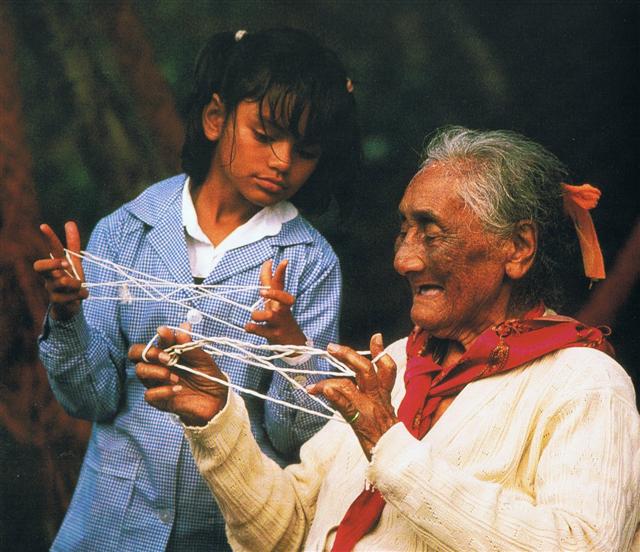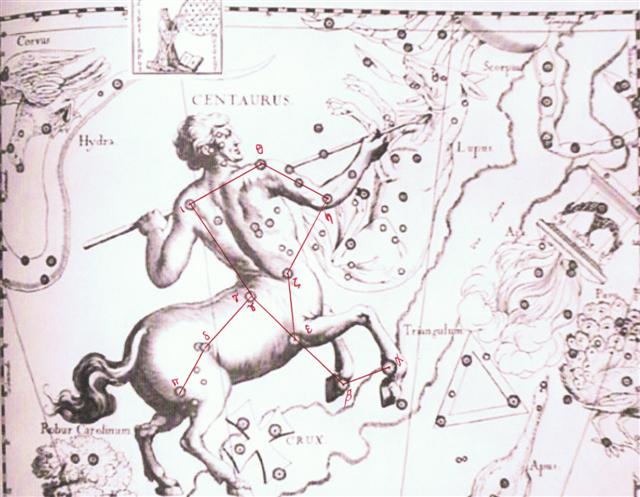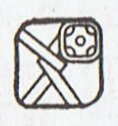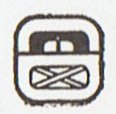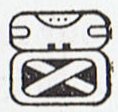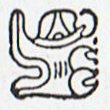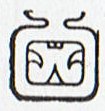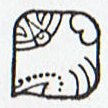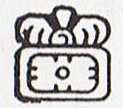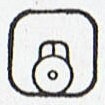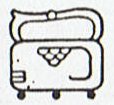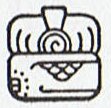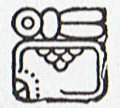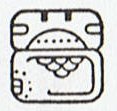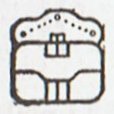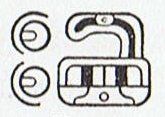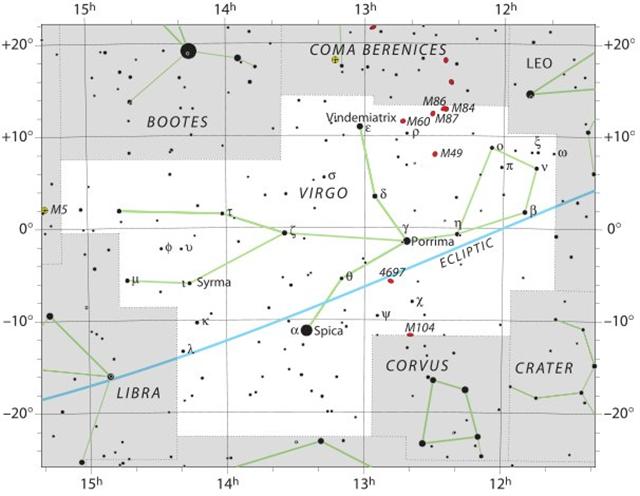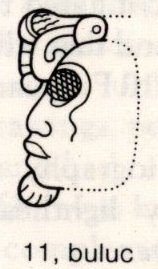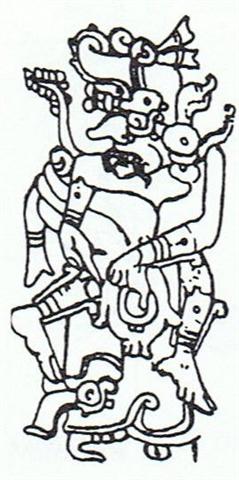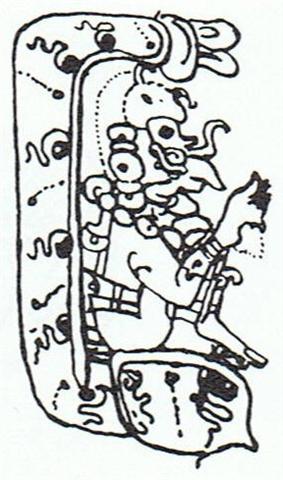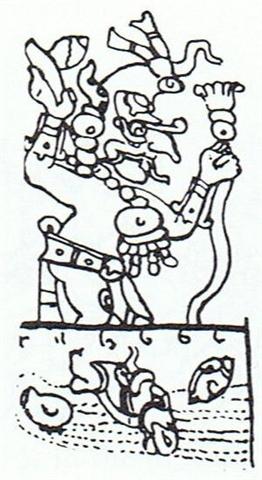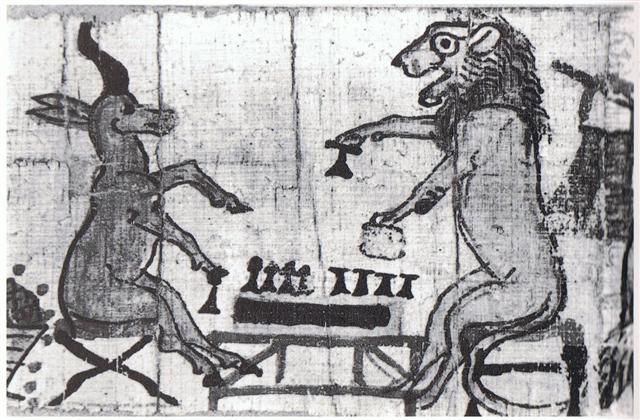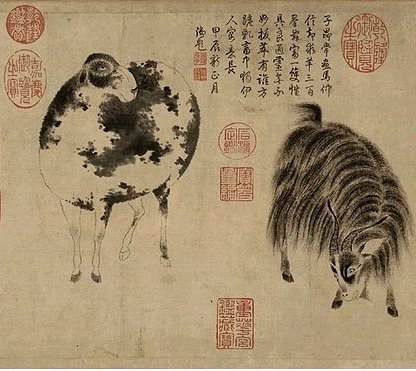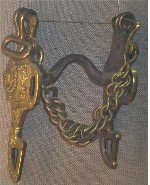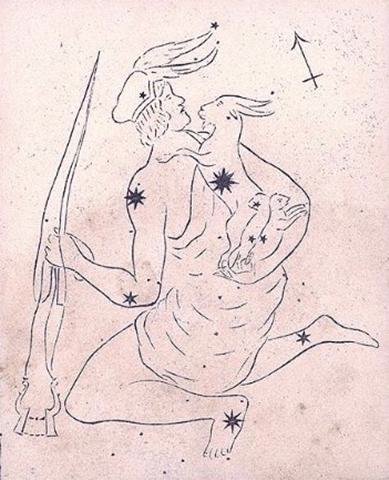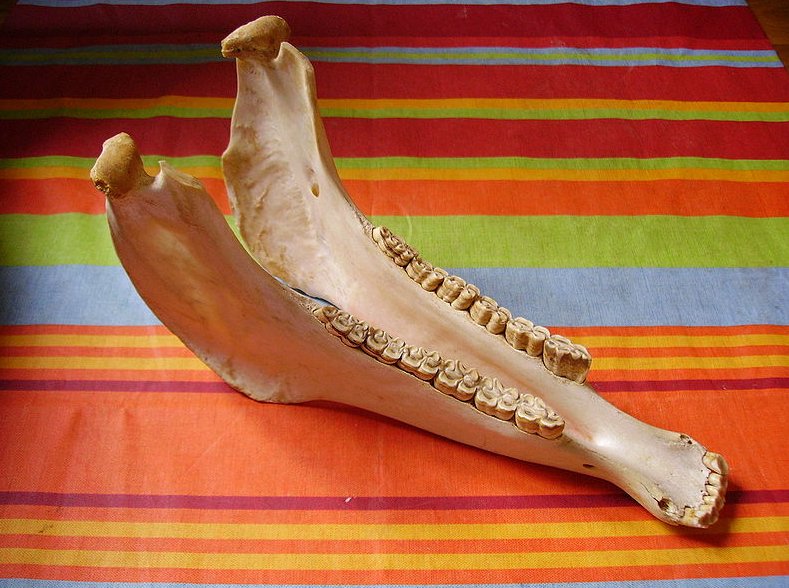When the Sun was at the other side of the equator it was safe to play with strings. Andromeda - the Sun dressed like a woman - could not move.
But finally, in *JULY 14 (*115) = September 20 (*183) the dark half of the year was ending, because 0h was at the Full Moon. Here the Sun returned from the northern hemisphere, moving across the equator, while his tanist (Saturn, with synodic cycle = 378 nights) went in the opposite direction, to the north from the southern hemisphere.
The date *JULY 14 (*115) was permanently fixed to Alchita at the Tail of the Horse and from there the precession made the Sun come later and later in the year.
When the Opener of the Way (Upwaut, the Wolf god) was speared by the Centaur, just above the Southern Cross (ć), it could have beeen in order to close the way of the Sun. It was the time of autumn equinox.
... My arrangement has 15 Moan as the first month of 'winter', i.e. the time of the year corresponding to when sun has gone down in the west in the evening. The mouth which opened wide in spring (cfr 4 Zotz) to allow Sun to enter (in 5 Tzek) has closed again in 15 Moan to show that darkness has returned. The outside 3 black dots in 16 Pax are much greater than those in 9 Ch'en. Darkness falls first with the onset of the rain clouds (the grapelike hanging formation) and then when Sun leaves in autumn ... But there were 8 days from Ma Wei to the 11th Arab station where the Sun reached Porrima in Virgo and when the Full Moon was at the newborn one (1) at the Breast of Cassiopeia (Schedir). *8 (Schedir) + *183 = *191 (Porrima):
... Eleven ... 'one left (over ten)' ...
The Mayan presentation of number 11 (buluc) had an eye which was black, alluding to the night of the New Moon,Ľ, and it was their 17th day sign:
We can see 7 of these Caban signs defining the 'Earth Lion' wrapped around the buried Sun in the Rain God panel between that of the Tree and that when he was wading in water:
... Actually, we are up against a completely incomprehensible narrative of events which occurred during a sea voyage. The plant, according to Albright (AJSL 36, p. 281, n. 2) literally 'thorny grapevine' is supposed to grow in the apsu, and to be accessible by way of a 'water-pipe'. This pipe, rātu, however, is a conjecture right here: the word occurs only later when, after his bath in a well, and the following loss of the plant, Gilgamesh complains bitterly about his frustration, i.e., about having obtained a boon for the 'earth lion' instead of for himself. The 'earth lion', identified with the thievish serpent, is assumed in its turn to live 'in a well which communicated with the apsu' (Albright, 35, p. 194). It is then (GE 11.298) that the hero says: 'When I opened the water-pipe and (...) the gear, I found that which has been placed as a sign for me: I shall withdraw and leave the boat on the shore' (Speiser trans., ANET, pp. 96f.) ... When the path of the Sun was closed at Porrima another path apparently opened up, the 'water-pipe'. Instead of the Wolf (singular, wild) there followed Dogs (plural, domesticated) - there was a single King piece on the game table but many 'dogs'.
Although there was also his mirror figure, the Barker (Al ┴wwā'):
... The medieval names Auva, Al Awwa, and Minelauva are from the Arabic, meaning 'barking (dog)'. This star, along with β Vir (Zavijava), γ Vir (Porrima), η Vir (Zaniah) and ε Vir (Vindemiatrix), were Al Awwā, the Barker ... ... There is, however, a remarkable variant where it is said that he [Kullervo in Kalevala] was 'sent to Esthonia to bark under the fence; he barked one year, another one, a little from the third; three years he barked at the smith of his uncle, at the wife (or servant) of the smith as his daughter-in-law' ... ... On Euphrates it was Lu Lim, the Gazelle, Goat, or Stag, - or perhaps King; and, with ε, probably Mas-tab-ba, another of the seven pairs of Twin-stars of that country. The Hindus called it Āpa, or Āpas, the Waters; and the Chinese, Tsze Seang, the Second Minister of State ... ... Gazelle is derived from the Arabic ġazāl.The first Latin language to adopt it was Middle French, and the word entered the English language around 1600 from the French. Arab people traditionally hunted the gazelle. Appreciated for its grace, it is a symbol most commonly associated in Arabic literature with female beauty. One of the traditional themes of Arabic love poetry involves comparing the gazelle with the beloved, and linguists theorize ghazal, the word for love poetry in Arabic, is related to the word for gazelle ...
... Tu'i Tofua was the son of Vakafuhu. His mother was Langitaetaea, but she was only one of the many young women whom Vakafuhu had living behind the fences of his dwelling. When Tu'i Tofua grew he was given the first-born sons of all the wives for his companions, and they all used to play sika outside the enclosure of Vakafuhu. They made their sika of clean-peeled sticks and threw them in turn along the ground, they glanced them off a mound and each one tried to make the longest throw. One day while Vakafuhu was sleeping off a kava-drinking those boys were playing their game outside, and Tu'i Tofua threw his sika. Then indeed the enormous strength of Tu'i Tofua made that sika fly over the fences into his father's place. It landed where the women were and they all began to giggle, those girls, and shriek and laugh. They did this because they wanted that handsome youth to come among them, they desired him. More than his father they desired him. They fell with joy upon the sika of their master's son, and snapped it. When he came inside to get it back they called out things that made him embarrased. 'Haven't you got another long thing there, Tu'i?' those women said. 'This one's broken.' And they put their hands across their faces and they laughed ... ... By the time a horse is fully developed, usually at around five years of age, it will have between 36 and 44 teeth. All equines are heterodontous, which means that they have different shaped teeth for different purposes. All horses have twelve incisors at the front of the mouth, used primarily for cutting food, most often grass, whilst grazing. They are also used as part of a horse's attack or defence against predators, or as part of establishing social hierarchy within the herd. Immediately behind the front incisors is the interdental space, where no teeth grow from the gums. This is where the bit is placed when horses are ridden.
Behind the interdental space, all horses also have twelve premolars and twelve molars, also known as cheek teeth or jaw teeth. These teeth chew food bitten off by incisors, prior to swallowing. In addition to the incisors, premolars and molars, some, but not all, horses may also have canine teeth and wolf teeth. A horse can have between zero and five canine teeth, also known as tusks (tushes for the deciduous precursor), with a clear prevalence towards male horses (stallions and geldings) who normally have a full set of four ... Between 13 and 32% of horses, split equally between male and female, also have wolf teeth, which are not related to canine teeth, but are vestigial premolars. Wolf teeth are more common on the upper jaw, and can present a problem for horses in work, as they can interfere with the bit ...
|
||||||||||||||||||||||||||||||||||||||||||||||||||||||||||||||||||||||||||||||||||||||||||||||||||||||||||||||||||||||||||||||||||||||||||||||||||||||||||||||||||||||||||||||||||||||||||||||||||||||||||||||||||||||||||||||||||||||||||||||||||||||||||||||||||||||||||||||||||||||||||||||||||||||||||||||||||||||||||
